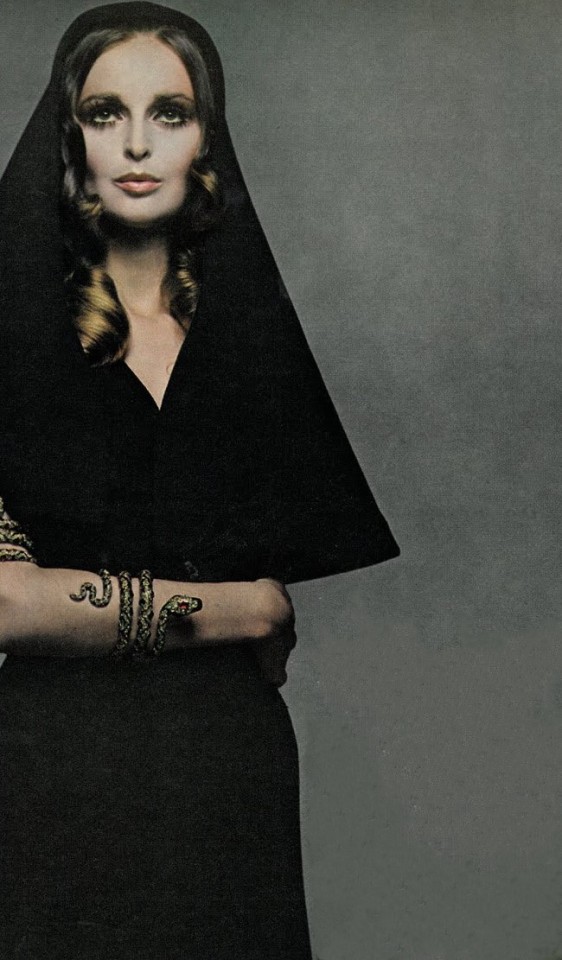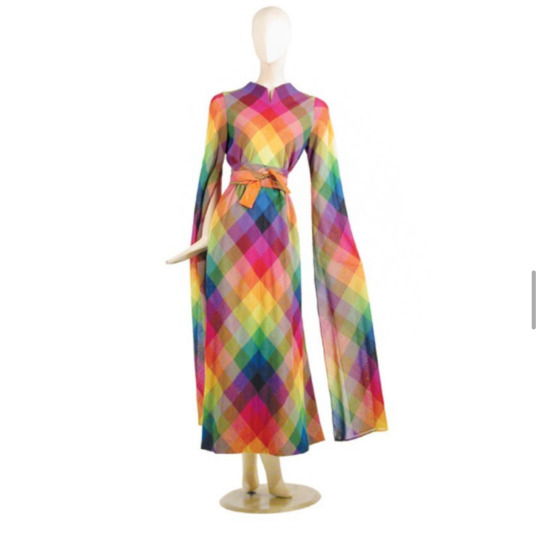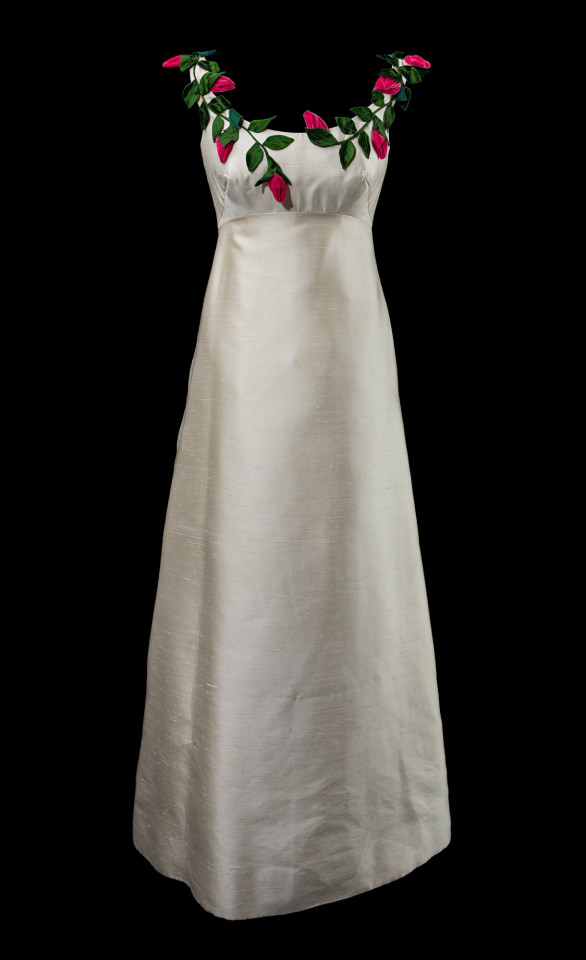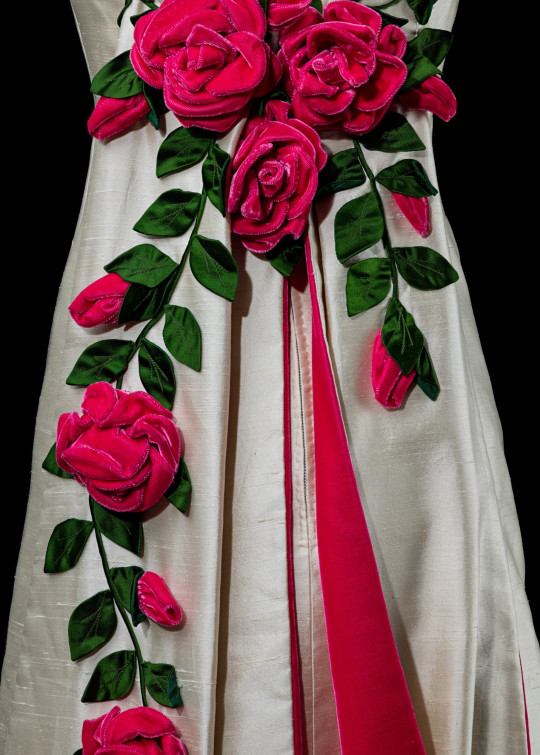#Pauline Trigère
Explore tagged Tumblr posts
Text

Richard Avedon - Samantha Jones Wearing a Dress by Pauline Trigère (Vogue 1968)
#richard avedon#samantha jones#vogue#photography#fashion photography#vintage fashion#vintage style#vintage#retro#aesthetic#beauty#sixties#60s#60s fashion#60s model#1960s#1960s fashion#swinging sixties#editorial#pauline trigère
829 notes
·
View notes
Text

US Vogue November 15, 1957
In the foreground on the left, leaning on the hood of a "62" Cadillac convertible, Mary McLaughlin wears a coat. By B. Weinstein, from "Autumn Haze", Emba natural brown mutation mink, over a matching wool dress by Pauline Trigère. Shoes, Evins. In the background on the right, perched on the Eldorado Biarritz convertible, Anne St. Marie in a coat of Umpa natural dark ranch mink by Ben Kahn.
Au premier plan à gauche, adossée sur le capot d'une Cadillac cabriolet "62", Mary McLaughlin porte un manteau. Par B. Weinstein, de "Autumn Haze", vison de mutation marron naturel Emba, sur une robe en lainage assortie de Pauline Trigère. Chaussures, Evins. Au fond sur la droite, perchée sur le cabriolet Eldorado Biarritz, Anne St. Marie en manteau de vison ranch foncé naturel Umpa de Ben Kahn.
Photo John Rawlings vogue archive
#us vogue#november 1957#fashion 50s#fall/winter#automne/hiver#ready to wear#prêt à porter#b.weinstein#ben kahn#pauline trigère#evins shoes#emba#autumn haze#anne st.marie#mary mclaughlin#john rawlings#cadillac 62#eldorado biarritz convertible#vintage vogue#vintage fashion
26 notes
·
View notes
Text

Evening dress by Pauline Trigere, 1960s.
62 notes
·
View notes
Text

Mirella Petteni wearing a shimmering sage green jacket and skirt, over a pale-brown blouse, all covered with paillettes by Pauline Trigère. Photographed by Irving Penn for American Vogue, February 1, 1965.
#mirella petteni#pauline trigère#irving penn#american vogue#vogue#1965#fashion photography#photo shoot#fashion#photography#1960s
64 notes
·
View notes
Text
#veruschka#veruschka von lehndorff#fashion photography#1960s#sixties#franco rubartelli#richard avedon#henry clarke#Irving Penn#bert stern#pauline trigère#yves Saint Laurent#Valentino#Chanel#Vogue#Vogue Italia#supermodel#fashion#60s fashion#DonyaleLuna#Michelangelo Antonioni#Mila schön#ennio morricone#Edda dell’orso
18 notes
·
View notes
Text










Pauline Trigère (Nov 4, 1908 – Febr 13, 2002) was a Franco-American couturière. She was famous in the United States during the 1950s and 1960s. She designed novelties such as the jumpsuit, the sleeveless coat, the reversible cape and the embroidered sheer bodice. She reinvented ready-to-wear fashion, matching form to function with bold prints and architectural silhouettes to create a distinctly modern female aesthetic. Trigère's loyal clients included Grace Kelly, Jacqueline Kennedy Onassis, Elizabeth Taylor, Kay Wiebrecht, and Evelyn Lauder. via Wikipedia
More from #HERdesign & caption: www.vintag.es/2023/10/pauline-trigere.html
#artoffashion #PaulineTrigère #fashion #FrancoAmerican #fashionherstory #PalianShow #couturière #readytowear #readytowearfashion #fashiondesigner #hautcouture
#Pauline Trigère#art by women#art#Franco-American couturière#Franco-American#couturière#haute couture#fashion
5 notes
·
View notes
Text

Pauline Trigère (November 4, 1908 – February 13, 2002) was a Franco-American couturière. She was famous in the United States during the 1950s and 1960s. She designed novelties such as the jumpsuit, the sleeveless coat, the reversible cape and the embroidered sheer bodice. She reinvented ready-to-wear fashion, matching form to function with bold prints and architectural silhouettes to create a distinctly modern female aesthetic. Trigère's loyal clients included Grace Kelly, Jacqueline Kennedy Onassis, Elizabeth Taylor, Kay Wiebrecht, and Evelyn Lauder. via Wikipedia | photography above by Arthur Leipzig

Trigère in 1952
2 notes
·
View notes
Photo

Dress Designer Pauline Trigère (1908 - 2002) c. 1970
7 notes
·
View notes
Text

Pauline Trigere Dress
Vintage Fashion Guild. "Evening dress, 1960s, Pauline Trigère, c. late 1960s. Bias-cut wool lined with china silk." Instagram, 25 Aug. 2023.https://www.instagram.com/p/CwXlcP-xDgt/.
2 notes
·
View notes
Text

Richard Avedon - Jean Shrimpton Wearing a Dress by Pauline Trigère (Vogue 1966)
#richard avedon#jean shrimpton#vogue#photography#fashion photography#vintage fashion#vintage style#vintage#retro#aesthetic#beauty#sixties#60s#60s fashion#1960s#1960s fashion#swinging sixties#supermodel#editorial#pauline trigère
119 notes
·
View notes
Text

US Vogue January 1952
Utica (Gown by Pauline Trigère)
Model : Georgia Hamilton
vogue archive
#us vogue#january 1952#fashion 50s#spring summer#printemps été#ready to wear#prêt à porter#pauline trigère#georgia hamilton#utica#vintage advertising#vintage vogue#vintage fashion
16 notes
·
View notes
Text

Gown by Pauline Trigere, 1960s.
54 notes
·
View notes
Text

Fashion designer Pauline Trigère photographed by Ormond Gigli in her New York studio, 1962. She designed the jumpsuit, the sleeveless coat, the reversible cape and the embroidered sheer bodice.
43 notes
·
View notes
Photo

Princess Astrid || Pauline Trigère
5 notes
·
View notes
Text
(from the source:)
Debutante ball gowns, prom dresses, quinceañera gowns : the outfits we wear for special occasions often hold a special place in our memory. However, Polly Duxbury's debutante dress is more than just special to Duxbury—it is part of American history because of the person who created it.
The dress was designed by Ann Lowe, an acclaimed African American dress designer who was happiest when she created in cloth. "All the pleasure I have had, I owe to my sewing," Lowe told a reporter for Ebony in 1966, "I wish I were physically able to do all the work myself."

Born in Clayton, Alabama, in 1898, Ann Lowe (née Cole) was the daughter and granddaughter of accomplished seamstresses. "She learned from them," said curator Nancy Davis. "She was really gifted, but she was also part of this lineage of seamstresses . . . and really capable ones." When Lowe was a child, she loved to play with the scraps left over from her mother's work, sewing and shaping them to transform them into flowers.
As a child, Ann Lowe would transform the scraps from her mother's work as a dressmaker, sewing and shaping them into flowers. Years later, flowers would be a hallmark of an Ann Lowe dress. One debutante brought her dress to Lowe for repairs when her date snipped a flower off of the dress and wore it as a boutonniere.
In 1914, when her mother died suddenly, young Ann Lowe, only 16 years old, completed her mother's commissions—including one for the First Lady of Alabama. Lowe continued to pursue her passion for design and sewing. When a wealthy Floridian invited Lowe to Florida to make dresses, Lowe recalled "I picked up my baby and got on that Tampa train."
In 1917 Lowe studied at New York's S.T. Taylor Design School. With racial segregation the common practice even in the North, Lowe "was separated from the other students and had her own space where she worked," Davis said, "but her work was so exceptional that she was used as an example."
After earning her diploma, Lowe continued to work as a designer for the social elite. "I love my clothes and I'm particular about who wears them," Lowe later told Ebony magazine, "I am not interested in sewing for . . . social climbers. I do not cater to Mary and Sue. I sew for the families of the Social Register." Lowe's clients included the du Ponts, the Roosevelts, the Rockefellers, and the Auchinclosses (famous today for family member Jacqueline "Jackie" Bouvier, better known as First Lady Jacqueline Kennedy Onassis).
Mrs. Auchincloss brought her daughter Lee Bouvier, Jackie's sister, to Ann Lowe to order her wedding gown. However, Lee and her mother soon canceled the order. They heard another designer, Pauline Trigère, would cost less. Ultimately the Trigère dress cost more, and when Jackie announced her engagement to then Senator John F. Kennedy, it was Ann Lowe who designed the bridal gown, as well as dresses for the bridal party.

The newly married Mr. and Mrs. Kennedy with members of their wedding party in 1953. Lowe designed both the bride's gown and the attendants' gowns. Jackie Kennedy’s wedding dress features trapunto. "Trapunto is a layering of fabrics to create a dimensional effect—it was a technique Lowe was well known for," Davis said. Photograph by Toni Frissell, courtesy of Library of Congress, Library of Congress Prints and Photographs Division.
When Lowe arrived in Newport, Rhode Island, to deliver the bridal party's dresses, the staff at the front door would not let her enter, telling her to use the back door. Lowe reportedly countered, "I'll take the dresses back" if she had to use the back door—and walked through the front door.
While a poorly timed flood wasn't typical for Lowe, the dramatic story of the Kennedy wedding gives us a window into Lowe's daily struggles. Lowe's prices were lower than her competitors'. Lowe's son, Arthur, helped her manage the business. After he died in a car accident in 1958, making ends meet became a struggle. "Too late, I realized that dresses I sold for $300 were costing me $450," Lowe said. She ended up owing money to friends, to suppliers, and to the IRS. "The Internal Revenue agents finally closed me up for non-payment of taxes. At my wits end, I ran sobbing into the street," Lowe said. In 1962 she declared bankruptcy. Someone anonymously paid Lowe's IRS debt. Many believe it was Jackie Kennedy—who would have discovered both the dramatic story of completing her wedding dress and Lowe's financial struggles. Lowe picked up her sketchbook and went back to work.
During her career, Lowe had her own label and a store on 5th Avenue. She worked for designer Hattie Carnegie. Her dresses were sold in Neiman Marcus, Henri Bendel, and Saks Fifth Avenue. At Saks, Lowe became the head designer of The Adam Room, a special in-house boutique that catered to the social elite. It was there that Polly Carver Duxbury ordered an Ann Lowe dress for her debutante gown. [The dress at the top of the post]
"The quality of this dress? Unbelievable," said curator Nancy Davis. "All the seams are lined with lace. There's an amazingly complex interior structure that the dress is built around—the slip and bra are built in. According to Polly Duxbury, the fit is absolutely glorious—it's like your skin. The slip has tulle along the hem, which gives it shape. This kind of really detailed, really high-end work is very time-intensive."
Looking at the interior of the dress, one can better understand why Lowe was so sought-after, and why she struggled financially. "Everything is so perfect—and she didn't charge enough for the cost of the fabrics or the handwork that went into them," Davis said. "Sewing was her lifeblood. It was her gift, but also her being. She just wanted to sew. She just wanted to make beautiful dresses that gave her clients joy." Indeed, Lowe told a reporter for the Saturday Evening Post in 1964, "I like for my dresses to be admired. I like to hear about it—the oohs and ahs as they come into the ballroom. Like when someone tells me, 'the Ann Lowe dresses were doing all the dancing at the cotillion last night.' That's what I like to hear."
(another article with some more photos)


• Dress.
Date: 1967
Designer/Maker: Ann Lowe
Place of origin: United States: New York, New York City
Medium: Silk, cotton, velvet.
5K notes
·
View notes